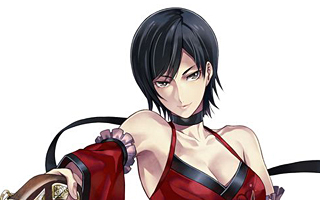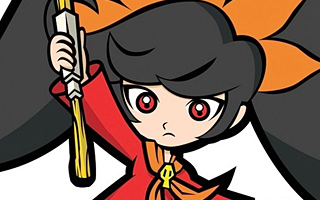Break Down the Walls
Top 10 Best Fourth Wall Breaks in Gaming History!
The fourth wall refers to the imaginary boundary that exists between performers and their audience. The term is often applied to television and film, but it was originally used for live theatre productions. When creators acknowledge the existence of the audience, they’re effectively breaking this invisible fourth wall. These types of metareferences can make it more difficult for the audience to suspend their disbelief, but they can also help immerse the audience into a fictional world. Since video games are an interactive medium, the fourth wall is not always clearly defined. Games are constantly relaying information directly to the player, after all, and most of them acknowledge their audience directly in some way or another. A simple “press start” prompt on the title screen could technically be seen as an example of a fourth wall breakage. We’re going to be more cerebral for the purpose of this list, and we’ll try to focus on examples where the player is addressed as part of the game’s narrative structure. Self-aware games like The Stanley Parable and Neptunia are unlikely to be mentioned, however, since the fourth wall can’t be broken if it doesn’t exist in the first place.
Examples: Deadpool, Ferris Bueler’s Day Off, Spaceballs
10
Sonic the Hedgehog
1991

If players remain idle for long in Sonic the Hedgehog, our favorite speedster will look directly at the camera and impatiently tap his foot. Even though it’s a simple gesture, it highlights Sonic’s restless personality and reinforces his “gotta go fast” lifestyle. Idle animations date back to the 1970s, and the Commodore 64 version of Boulder Dash featured a foot-tapping gesture a decade before Sonic the Hedgehog hit store shelves. Although Sonic wasn’t the first character to have an idle animation, there’s no denying that he popularize the trend. Many characters tried to mimic Sonic’s famous pose in the ’90s, and some developers pushed things beyond the point of obnoxiousness. Sonic’s toe-tapping animation can be seen in many of his adventures, and it has even been immortalized as a solar-powered statue. The irreverent gesture seems elementary compared to the other scenarios on this list, but I felt it warranted a mention anyway because of how influential it was. It’s arguably the most famous example on this entire countdown.
9
X-Men
1993

The Sega Genesis version of X-Men is set within the aptly-named Danger Room. The room was conceived as a routine training area, but things went awry after a malicious computer virus disabled all of the safety measures. The X-Men have to deal with all sorts of unpredictable scenarios, and the most precarious moment occurs in the game’s fifth stage when players are told they need to “reset the computer.” As the timer steadily counts down, players are given absolutely zero hints. You aren’t told how to reset the computer, and it’s not even clear which computer is being referenced in the first place. It turns out that the solution is to reset the Sega Genesis itself! If players hit the reset button on the console, they’ll be greeted with a message indicating that the virus has been subdued. This is the only way to proceed to the final stage, and it’s remarkable that anyone ever figured it out. You can still mess things up even if you know the solution. If you accidentally hold the reset button for too long, it will trigger a hard reset and force you to start over from the beginning. The Genesis Nomad doesn’t even have a reset button, so you’re shit out of luck if you’re playing on the handheld.
8
Panzer Dragoon Saga
1998

During the opening act of Panzer Dragoon Saga, a young mercenary named Edge narrowly avoids death with the help of a mysterious flying dragon. It’s later implied that this dragon is a Divine Visitor who will lead humanity to salvation. At the end of the game, the dragon reveals that he is not the Divine Visitor of prophecy. The real savior is “the one from the outside world” who has been guiding Edge’s actions throughout the adventure. It’s a subtle acknowledgement of the player’s existence at first, but the curtain is pulled all the way back when the dragon addresses the player directly and refers to them by their real name. You’re specifically prompted to provide your name when you start a new game, but I had forgotten that I had entered it by the time the game used the info. After this startling revelation, the dragon asks the player to “press the button” for a new beginning. The ending is left open to interpretation, but it’s inferred that the world resets and Edge dies at the beginning of his journey. The implication is that Edge was only able to live because the player gave him the ability to do so. This is technically true, of course, since no video game character can “live” without input from the real world.
7
Trace Memory
2005

Trace Memory – known as Another Code: Two Memories outside North America – is a point-and-click adventure game that uses the Nintendo DS hardware in creative ways. Most of the puzzles require the touch screen while others make use of the microphone, but the most interesting puzzle simply requires players to close their DS. At one point during the game’s second chapter, you’ll come across a folding picture frame sitting on a table. Both of the framed images depict strange symbols, but it’s difficult to extract any meaning from them at first glance. If you decide to examine the picture frame, its images will expand to fill both screens on the DS. This will give you a closer look at the strange symbols, but it probably won’t help you solve the puzzle. To find the solution, players will have to slowly close their DS in order to make the top screen reflect in the bottom screen. If you can get the angle just right, the layered reflection will reveal the letter F and the number 3. This information will ultimately lead you to a specific book that’s located in the study. Reflection-based puzzles are not uncommon, but Trace Memory somehow found a way to incorporate a real-world reflection into its fictional universe. This puzzle obviously had to be altered in the 2024 Nintendo Switch remake, since folding the screen wasn’t a viable option.
6
StarTropics
1990

StarTropics is reminiscent of The Legend of Zelda in many ways, but its contemporary setting and Americana artifacts make it stand out from most games in the genre. One of the game’s most noteworthy aspects involves a secret radio frequency that players are supposed to track down. Your in-game uncle gives you an important clue when he implores you to dip his letter in water. It’s not immediately clear what he’s talking about, however, and you could search everywhere in the game without finding the letter in question. It turns out that he’s referring to a physical letter that was packaged alongside the manual. This parchment paper had a generic “welcome to the island” message printed on it, but a secret message would be revealed if you got the letter wet. This means that the only legitimate way to solve this puzzle was to do something in the real world. Some people have written this off as a cynical anti-piracy measure, but this seems unlikely since the hidden code is the same for every copy of the game. When StarTropics was released on the Wii’s Virtual Console, the virtual manual featured an animation of the letter being dipped in water before revealing the code. The Wii U version replaced this animation with an image of the submerged letter and an explanation how it was used in the original NES version. Sadly, the low-effort Nintendo Switch Online version leaves players hanging and provides them with no way to find the hidden frequency. I guess that’s why the Internet exists.
5
EarthBound
1994

As you near the halfway point in EarthBound, you’ll encounter a man who asks for your real name. You’re required to name the protagonists at the beginning of the journey, so it’s not immediately apparent why the game suddenly requires your actual name. Rest assured, everything will become clear during the final battle. At this point, the party will find themselves engaged in battle with a hostile alien that’s impervious to physical attacks. With no other options available, Paula uses the power of prayer to contact various characters that her friends have met during their journey. The people of Earth hear her prayer and lend their support, and the alien is ultimately weakened by the outpouring of emotions. Their combined power is not enough, however, and additional help is still required. With that in mind, Paula knocks down the fourth wall and asks the player to pray with them. You’ll be referred to by name at this point, and this makes you feel like you’re a part of the story. The game doesn’t prompt you to press any buttons or perform any in-game actions. Instead, it simply asks for your support on a spiritual level. By breaking the fourth wall in this manner, EarthBound is able to establish a profound emotional connection with the audience in a way that few games can.
4
Bravely Default
2012

Bravely Default‘s final act is set against the backdrop of the Celestial Realm. It’s eventually revealed that this realm is our world, and the gods that are referenced throughout the adventure are implied to be the humans who are playing the game. The characters don’t fully realize that they exist within a video game, however, and they simply interpret us as deities. After the main villain detects your presence within the protagonist, he blames you for your direct interference and promises to exact his revenge. To that end, he tears open a rift into the Celestial Realm. As this happens, the front-facing camera on the 3DS snaps a picture and imports your face into the background. This makes it look like you’re looking down on the battle from the heavens, and all of the characters in the game will be aware of your existence. The villain in Bravely Second is aware of the player from the get-go and even attempts to delete your save file at one point, but the revelation in Bravely Default made a bigger impact. The game somehow found a way to import the player into the game without their knowledge.
3
Eternal Darkness
2002

Eternal Darkness features an innovative sanity meter that will be depleted whenever the player is spotted by an enemy. If the meter dips below a certain threshold, it will trigger in-game hallucinations. Some of these sanity effects are played for laughs while others are more psychological in nature, and their intensity will ramp up if you fail to refill the meter in a timely fashion. You’ll never know what to expect next. Books might start flying off shelves, entire rooms could be turned upside down, and your character’s head can fall off without warning. While most of these effects are aimed at the in-game character, some of them target the player directly. The game might trick you into thinking the television has shut off, for instance. At another point, you’re controller could stop working as the game erroneously informs you that it has been unplugged. The scariest sanity effect I encountered lead me to believe that my save files were being deleted. The game really knows how to play with your emotions. These sanity effects will only work if they catch the player off guard, however. This means that the game has to effectively rebuild the fourth wall every time it knocks it down. Players are conditioned to expect the unexpected, but the game still finds ways to surprise them. Rebuilding the fourth wall is more difficult than breaking through it, so Eternal Darkness deserves tremendous credit in this regard.
2
Doki Doki Literature Club!
2017

Doki Doki Literature Club! is centered around an introverted student who joins his high school’s literature club. The other members of the club are all cute girls, and the plot has all the makings of a harem anime. The characters engage in flirty conversations with each other while trying to hone their poetry skills, but things take a dark turn when one of the girls dies in a grim fashion. The game abruptly ends at this point, and the player is sent back to the title screen. The previous save files will all be corrupted, so you’ll be forced to start over if you want to advance the story. The basic premise is the same when you start a new game, but the deceased girl is strangely absent and nobody remembers that she ever existed. It’s clear that something has gone wrong, and many of the game’s visual elements appear to be corrupted. Another member is killed in a similar fashion, and this prompts yet another girl to run away in horror. The club president, Monika, is revealed to be behind the disturbing events. She was upset by the fact that she wasn’t a romantic option in the game, so she went out of her way to eliminate the competition. Monika doesn’t care about the protagonist, however, since she’s fixated on the player instead. She explains that she has become self-aware and somehow gained the ability to delete the game’s files. After removing the other girls from the equation, Monika talks to the player incessantly and goes so far as to remove the game’s “skip dialogue” option. With the fourth wall effectively shattered, the player can give Monika a taste of her own medicine by manually deleting her folder from their computer’s file directory. As she’s phasing out of existence, Monika apologizes for her actions and promises to restore the files she deleted. What a roller coaster ride.
1
Metal Gear Solid
1998

Hideo Kojima loves to break the fourth wall, and many examples can be seen in the Metal Gear franchise. When Raiden examines his dog tags in Metal Gear Solid 2, it’s revealed that they’re engraved with the player’s personal info. The ending of Metal Gear Solid 5 has a similar twist, and it acknowledges that the player was directly responsible for Snake’s actions all along. The most shocking example of a fourth wall break happens during the fight with Psycho Mantis in the first Metal Gear Solid. Within the context of the game, the unhinged soldier uses his psychic powers to manipulate Solid Snake. In reality, he plays mind games with the player. This scheme is carried out in various ways. The game can scan the PS1 memory card for save data, and this gives Psycho Mantis specific knowledge about what other games the player is a fan of. When he starts talking about your progress in Castlevania or Suikoden, it’s obvious that he’s talking to you directly. He also demonstrates his telekinetic powers by causing the controller to move via the rumble feature after instructing the player to set it down. Psycho Mantis always seems to be one step ahead of his adversaries, so the best way to defeat him is to plug the game controller into the second port. This prevents him from reading your controller inputs, and it also means that he’s no longer able to read Snake’s mind.





Do you agree with this list? Let us know what you think by leaving a comment below. Your opinion matters!